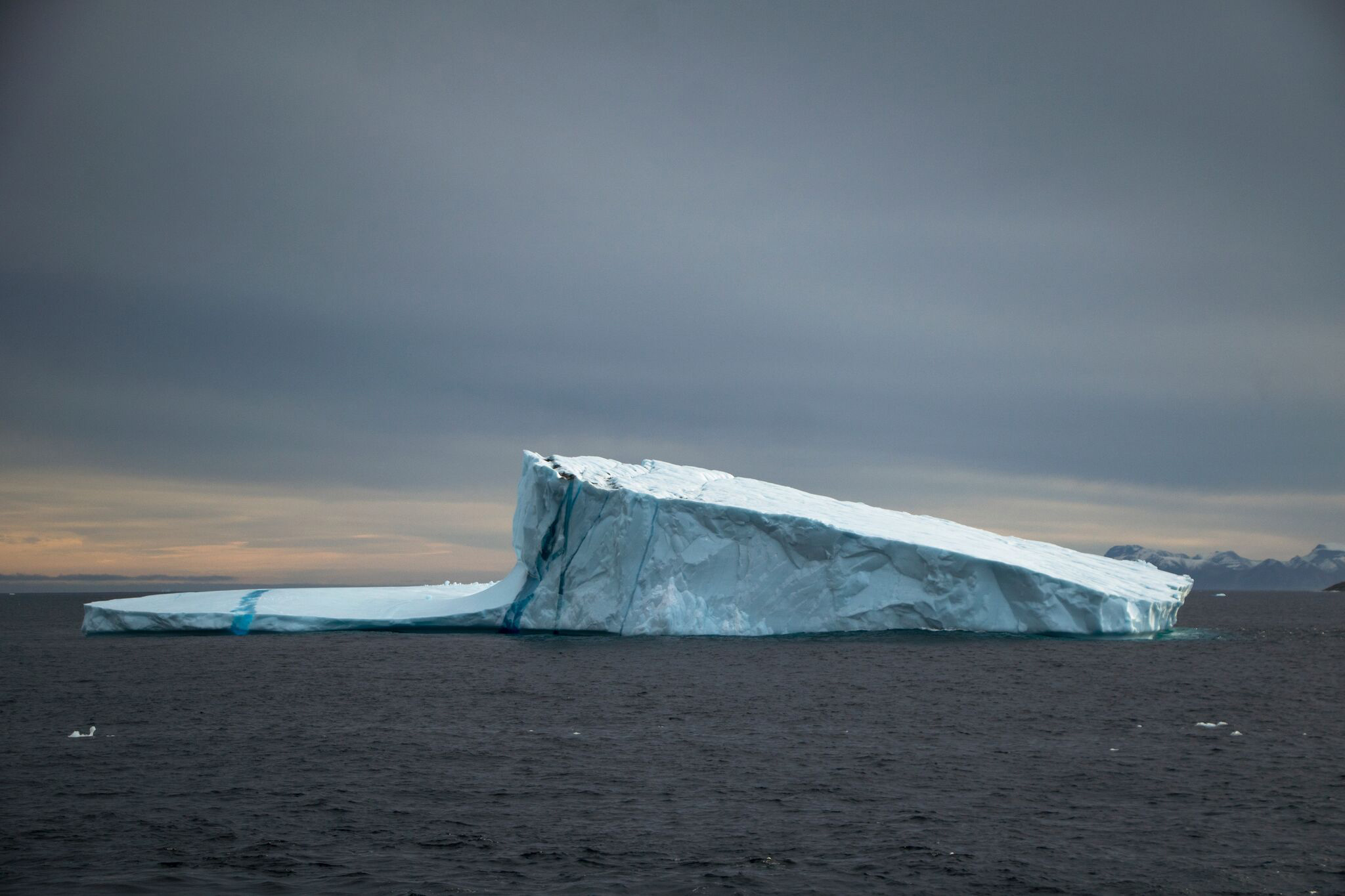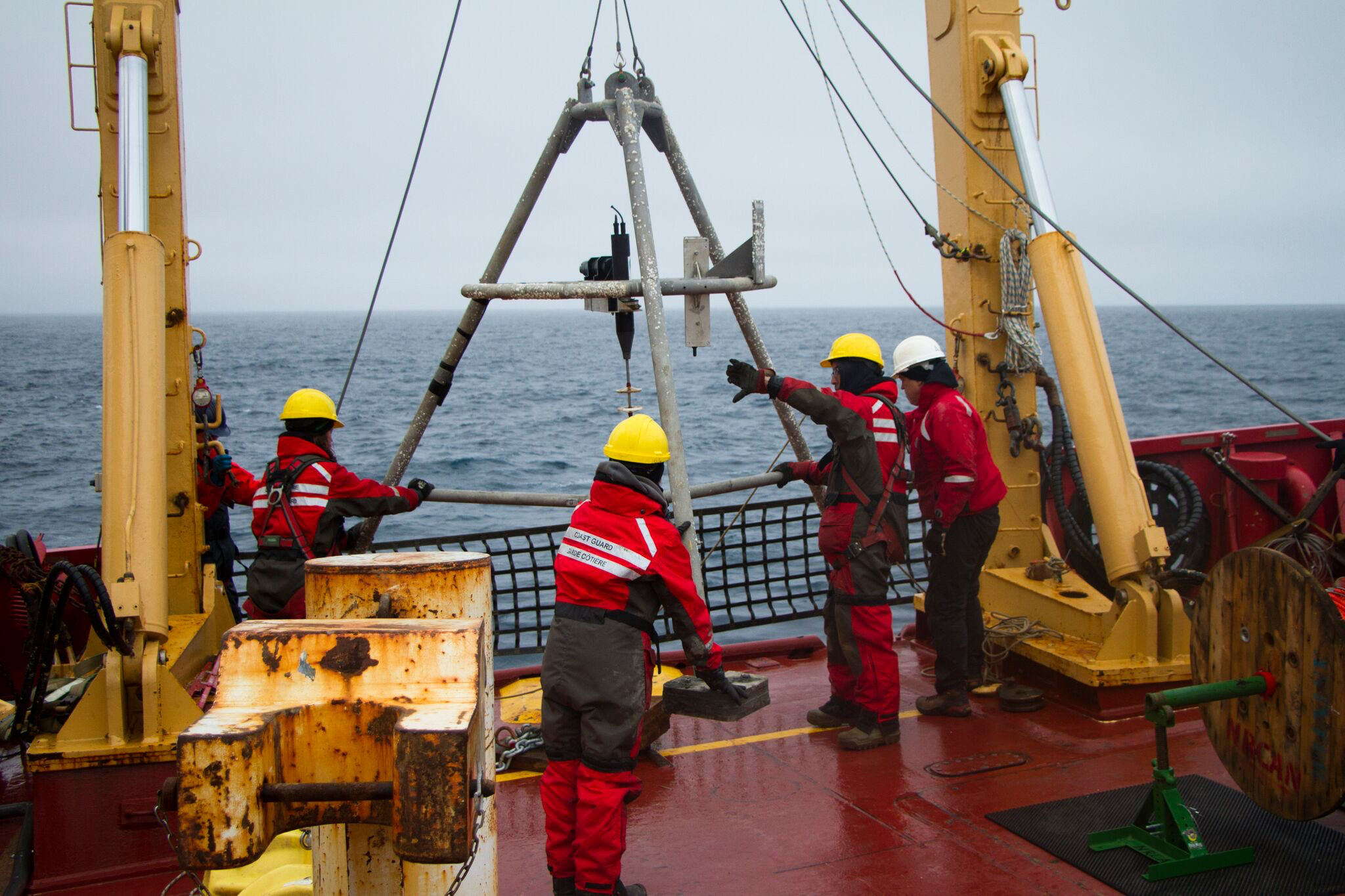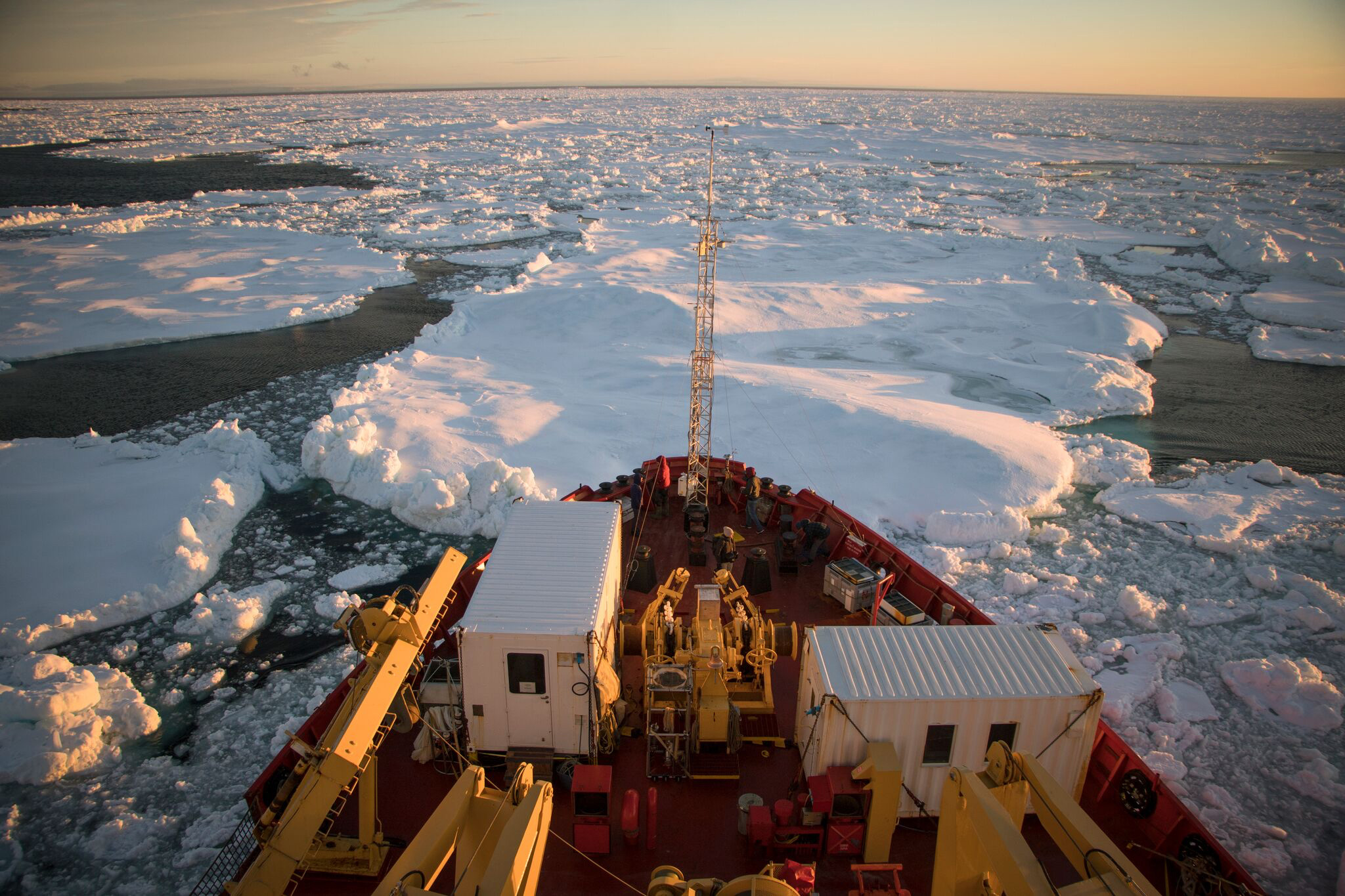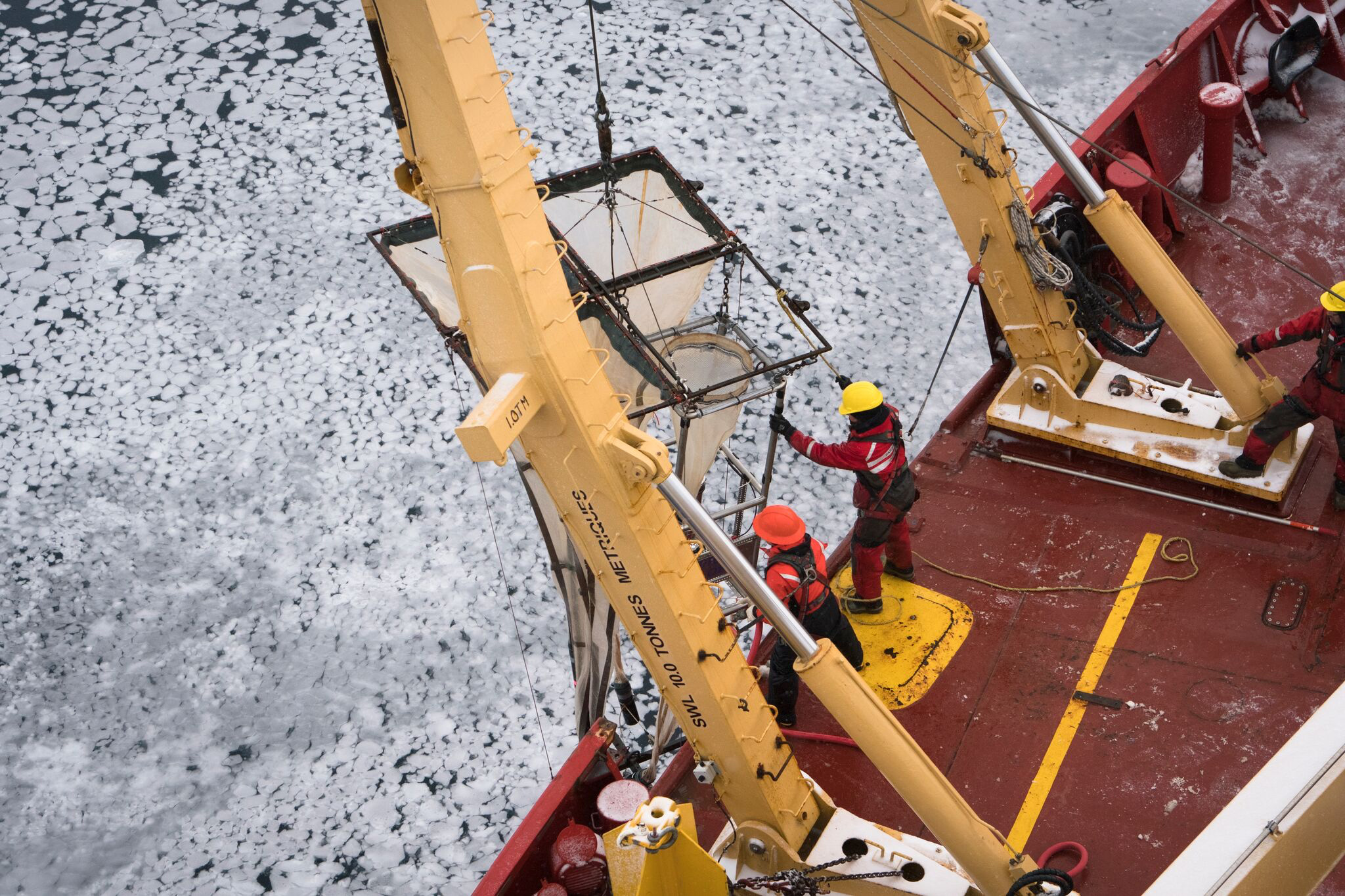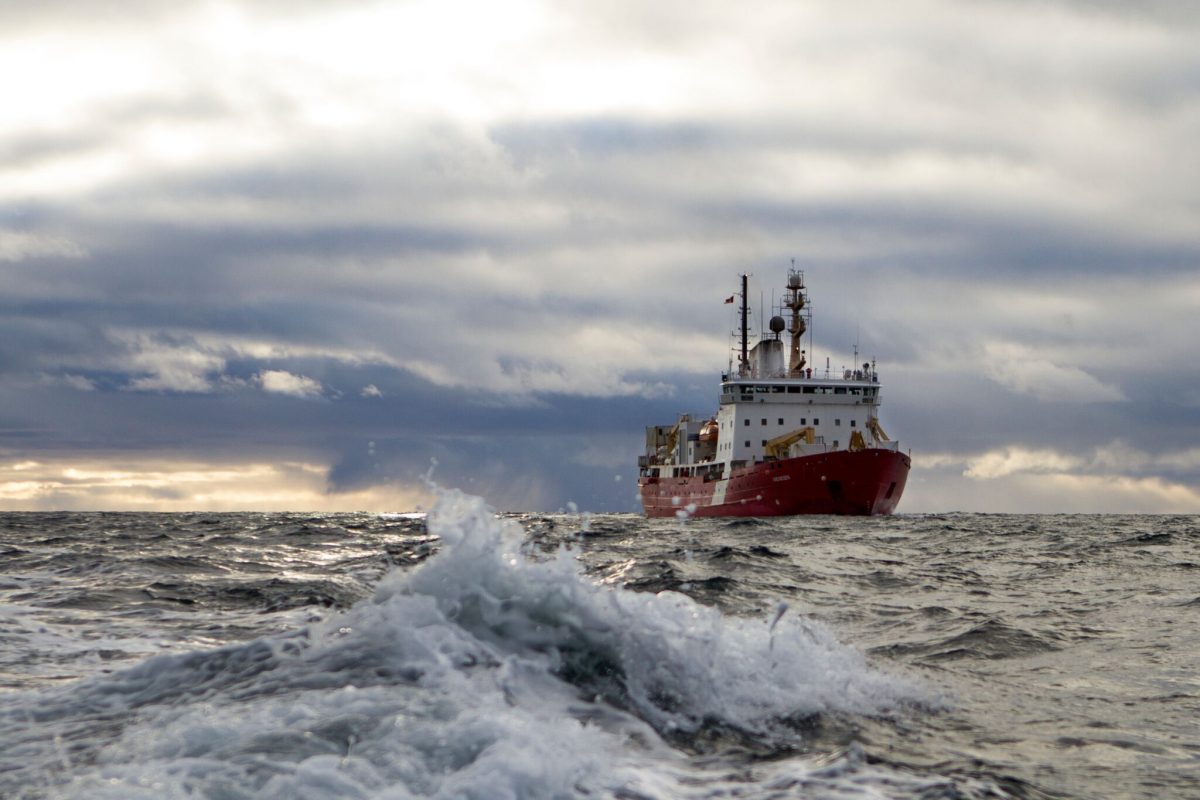
Amundsen Icebreaker. Image courtesy of Build Films.
Breaking Ice documentary features UM scientists on a mission to understand climate change
Film follows Arctic scientists aboard the Amundsen icebreaker as they investigate a changing climate
Breaking Ice, a feature-length documentary from local film production company Build Films, follows a group of scientists from the Centre for Earth Observation (CEOS) in the Clayton H. Riddell Faculty of Environment, Earth, and Resources as they conducted research to distinguish the effects of climate change from hydroelectric regulation of freshwater on Hudson Bay.
The Hudson Bay System study (BaySys) was the largest multidisciplinary study of Hudson Bay ever performed, bringing scientists across Canada aboard the Amundsen icebreaker to study the upstream watersheds and the full marine system.
A partnership between academia led by CEOS, and industry, specifically Manitoba Hydro, BaySys addressed questions that were relevant to both groups, said David Babb [BScPhG(Hons)/10, MSc/14], a research associate on the expedition. The study showed that the complex Hudson Bay system is changing under a changing climate, affecting wildlife and the people who live around the Bay that rely on the local environment for their way of life.
“The project dramatically improved our understanding of the Hudson Bay system, the impacts and potential impacts of climate change, the effect of hydro development and freshwater regulation and the overall changes happening in the Hudson Bay system” says Babb, who worked alongside the late David Barber, and many other researchers from CEOS and other researchers from across the country.
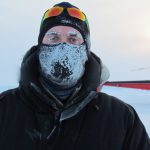
David Babb [BScPhG(Hons)/10, MSc/14] in the field. Image courtesy of David Babb.
UM Today connected with Babb to find out more about the Amundsen expedition and what it was like to participate in the documentary.
UM Today: Why was it important for you to participate in the film?
David Babb: It was important for me to participate in the film because it offers a glimpse into how we conduct our research and provides another way to communicate our science.
I think as a scientist it is very important to communicate our work to as wide of an audience as we can. This film offers another avenue to do just that and has the advantage of sharing our research in a visually appealing way. Some of the shots in this film are absolutely breathtaking and do a lot more to convey our research than I can with bad photos that I take in the field.
What was your role on the expedition?
DB: At the time I was a research associate under Dr. David Barber. In this role I led some of the sea ice research being done onboard the Amundsen and across the broader BaySys project, including three winter field campaigns that preceded the Amundsen expedition. During the expeditions I spent quite a bit of time on the ice collecting ice cores, measuring ice thickness, deploying ice beacons and collecting water samples from directly below the ice, all of which was done with a team of scientists and included quite a bit of training for new master’s students who were sampling ice for the first time.
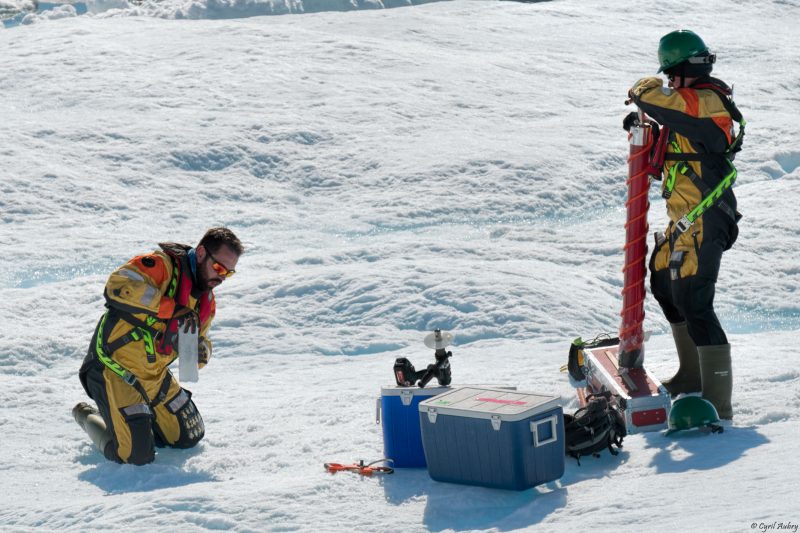
David Babb (left) working with samples on the BaySys expedition. Image courtesy of David Babb.
One of the winter campaigns was a helicopter survey of the mobile ice pack from Churchill; I served as chief scientist and therefore had the added responsibility of planning our work, selecting ice floes to target, coordinating with the helicopter pilots and most importantly ensuring everyone was safe.
What was it like to spend so much time in the Arctic?
DB: I have been fortunate to take part in several Arctic field campaigns, including several expeditions on the Amundsen. It can be tough to spend so much time away from home, but it also provides incredible experiences and access to areas that most people don’t get to experience.
I truly love spending time in the Arctic, particularly working out on the ice during nice sunny days. I don’t think it gets much better than that, so I always enjoy my time in the Arctic. I also think the Arctic is an area that not many people get to experience, so I always consider myself lucky every trip I get to make.
The expedition included researchers from other organizations, including Université Laval. Why are research collaborations like this important?
DB: As a scientist it is important to expand the breadth of your research and connect across disciplines; collaborations with other groups are therefore a key part of doing effective research and benefit all involved.
As a sea ice scientist, I am happy to share my expertise with biologists or chemists who may not be overly familiar with sea ice but need that context to improve their research. Similarly, collaborations can improve my research and make for an overall more successful research program.
A big part of the Amundsen is spending time with colleagues onboard and discussing projects/ideas over meals or downtime. Considering that everything in Hudson Bay is affected by the sea ice cover, I had a lot of conversations with students and other scientists who specialize in other fields but may not be familiar with sea ice so I was able to share my expertise and in turn learn how I could adapt my research to help them answer their questions. It is a very collaborative environment onboard.
In terms of Arctic research, it is important to collaborate because it is very expensive to do this research so when you’re there you want to make sure you maximize the research that is done.
Why do you think it is important for people to see Arctic research in action?
DB: I think films such as Breaking Ice really help to convey what goes into Arctic research and understand how the research is done.
It also provides the human element of research, which can help an audience connect to the story or the results that are being shared. Seeing a film that touches upon sea ice loss and climate change can be much more convincing than reading an article.
I also think seeing the effort that goes into Arctic research and the conditions that we deal with can help people understand just how tough this work can be, and why it requires large programs like BaySys and platforms like the Amundsen to conduct this work. Not just any ship can go to the middle of Hudson Bay and sample ice.
Why should people see the film?
DB: People should see the film because it provides an excellent view into Arctic research and some of the changes that are taking place in the Arctic environment under a warming climate.
It is also just a beautiful film to watch with stunning scenery from an environment that not many people get to experience firsthand. Build Films have done a great job of capturing the beauty of the Arctic environment.
I also hope people see how dedicated the scientists are. This is part of our life’s work and while the expedition lasted several weeks, the data collected will make up our work for years.
Watch the Breaking Ice trailer
The film will be released on YouTube later this year.
Images below are from the Breaking Ice film, provided courtesy of Build Films.







